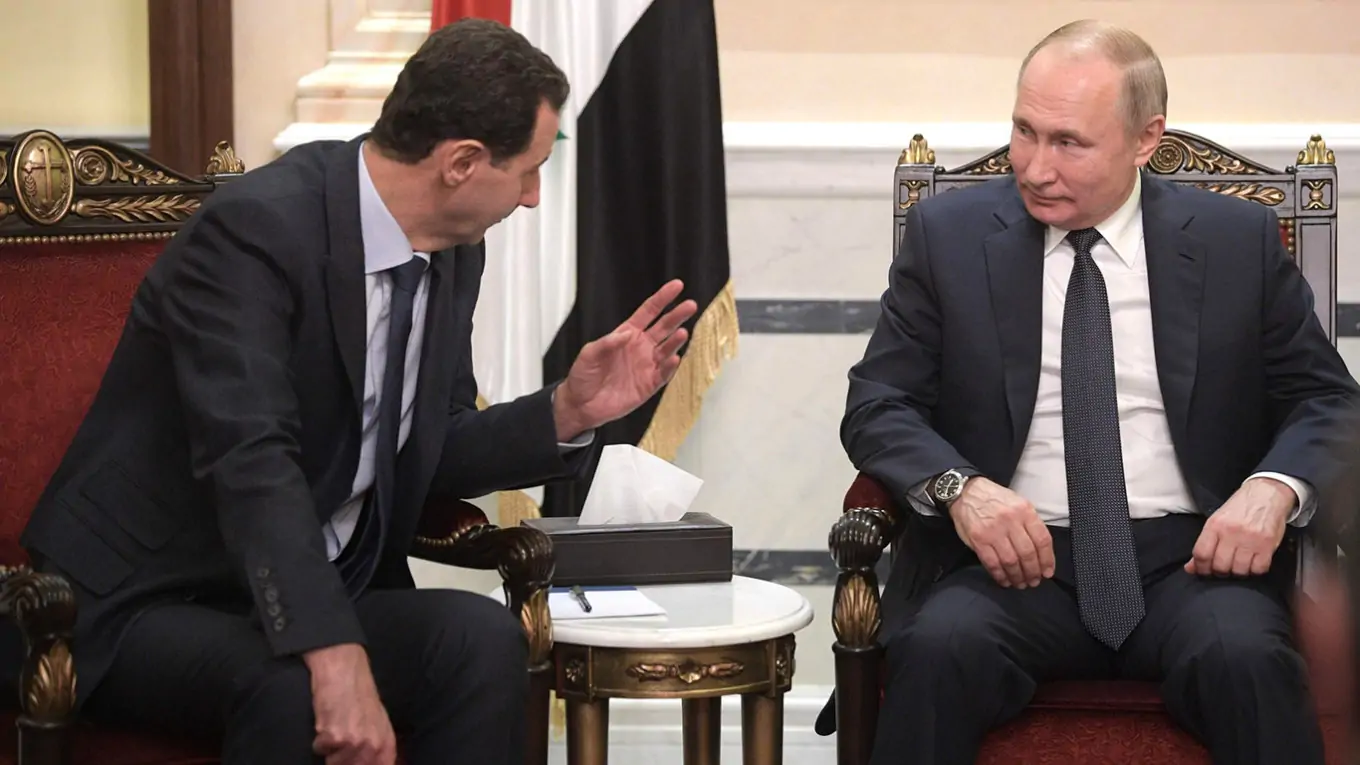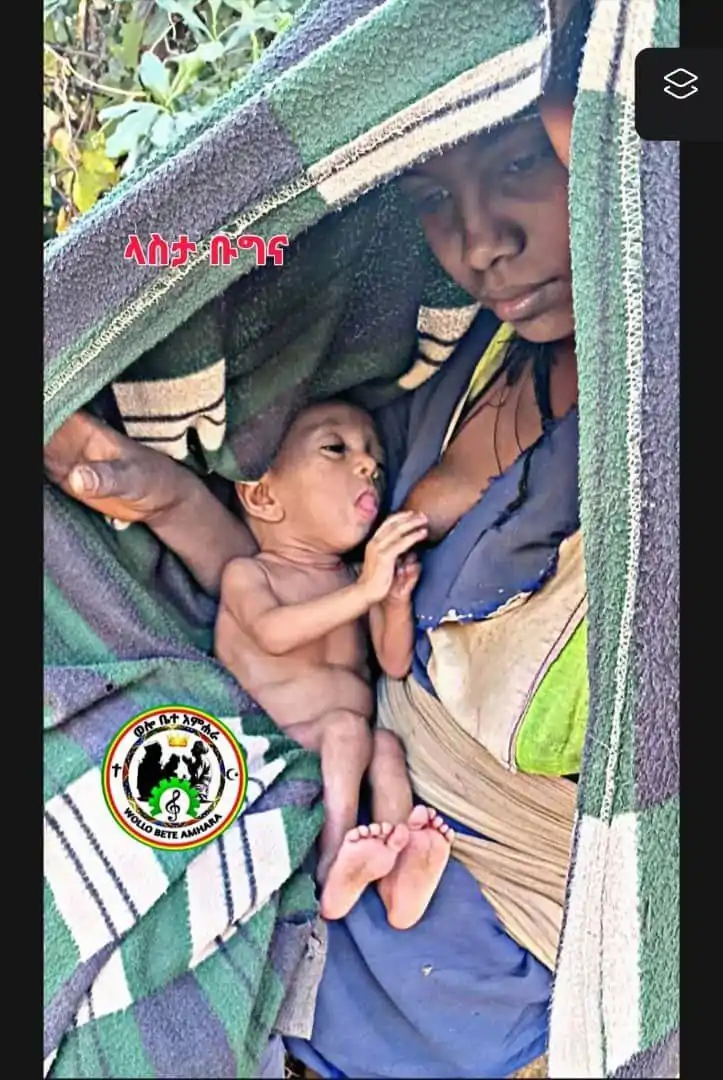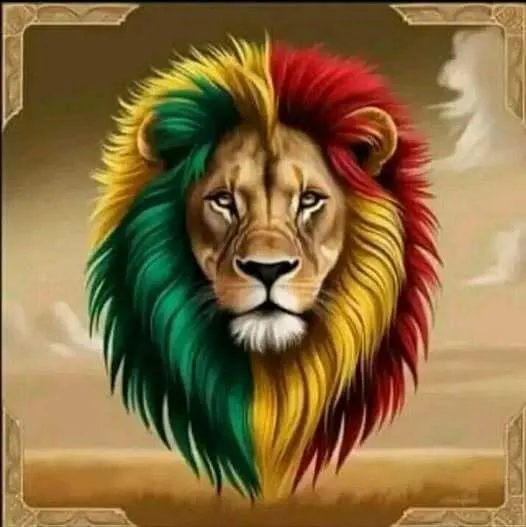By Berhanu Kebede
 The following would have been a fitting headline that encapsulates two identical events that took place three decades apart. A testament to forty-six years-long dance in ambiguity, TPLF continues to struggle to escape from freedom.
The following would have been a fitting headline that encapsulates two identical events that took place three decades apart. A testament to forty-six years-long dance in ambiguity, TPLF continues to struggle to escape from freedom.
“After a long protracted war, further amplified by a famine of biblical proportion looming over Tigray, The Tigray armed forces assert full control over Tigray, achieving their aim of establishing free and an independent Tigray….”
This could very well be a piece of a headline, published in February 1989 when Tigray Liberation Front (TPLF) assumed full control of Tigray, and reprinted again on December 2021, as TPLF abandoned its march to Addis Ababa and returns to free Tigray.
The discourse on the war in Ethiopia doesn’t unfold on a neutral plane where different interlocutors debate and exchange ideas and finally submit to the best idea. Rather, the battle on the ground is complemented passionately with fierce spurs, on cyberspace, on major city squares, and boulevards, across different time zones and in different languages. Even those with no direct kinship to the two groups conveniently assume their positions to play active roles in shaping the direction of the conflict to their own desired ends.
As the war dragged on, people on both ends of the spectrum pinned their hopes and wishes to see an ending similar to recent large-scale battles. The two historical battles offer tantalizing possible endings on how the war might come to its conclusion. Although the possibility becomes remote every day, Some wish for an ending that is similar to what just happened to the Taliban in Afghanistan, TPLF triumphantly marching toward the capital to seize power, while others wish the annihilation of TPLF with an ending similar to that of The Tamil Tigers of Sri Lanka when the long and bitter civil war came to its conclusion with the ultimate demise of the Tigers in 2008.
It’s also important to note the ending will not provide an answer to the critical question: What does TPLF want?. A question obscured amid competing voices, emotions, speculations, and debate. As the chores from within and outside try to crowding-out the voices of reason, it invited us to a conversation that might revile the identities of TPLF.
As the famous Irish poet David Whyte once said, whatever you as an individual would like to happen will not happen exactly as you would like it …, what occurs is this third frontier, the conversational nature of reality, an elegant description of the conversational nature of reality,
When and how the war will end is anyone’s guess. All those wishing a quick and peaceful end to the current crisis must imagine a new reality never tried before, not to the status quo. The status quo gave rise to the current reality, therefore, it’s unattainable. A new reality is bound to arise, a reality that invites to the all-new conversation.
Introduction
In his illustrious book entailed Escape From Freedom, the famous socio-psychoanalyst Erich Fromm theorized two types of freedom – Freedom From and Freedom To, two types of freedom, although different, are mutually inclusive or complement each other in succession, the freedom from must be followed by the freedom to. This brief article will attempt to reflect on the TPLF’s journey for freedom from and to as we examine the unique characteristics of TPLF – its skills to survive in ambiguity.
TPLF’s took place five decades ago at the Sidist-Kilo campus of Haile Selassie I University, as it was called then. TPLF’s founding ideology was deeply anchored between the pages of the famous discussion paper “On the Question of Nationalities in Ethiopia”, written by a famous student activist and leader, Walelegne Mekonen, in 1969, four years before the establishment of TPLF. The student movement widely accepted the five pages essay as a comprehensive treatise providing a lesson on the rudimentary political theory of indicting one particular ethnic group -The Amhara ( see the TPLF 1976 manifesto). The lofty title appeared to be promising of an in-depth, however, it was short in prescribing the solution to its question.
To the handful of young and would-be TPLF leaders, a real intellectual effort to find an answer to Walelegne’s question was not important. This choice of political principle not only begot TPLF but also furnishes the group to proceed with its anti-Amhara and ethno-nationalist rhetoric. The following few lines are copied from the 1976 TPLF Manifesto.
“ The de-humanized Tigrayans masses are not only made to be unemployed, prostitutes, migrants, etc. But also made to be ignorant, diseased, starved, criminal, etc all this results from Amhara national subjugation. “
“The target of the Tigrayans national struggle is and should of necessity be mainly against Amhara national subjugation, etc…The first task of this national struggle will be the establishment of the independent democratic republic of Tigray. The oppressor Amhara nation will never get relive unless it stopped its oppression.”
The manifesto also endorsed Marxism and Leninism as the ideological framework for the independent communist republic of Tigray. With all the communist ideals intact, including the universal proletarian values, TPLF attempts to reconcile these two ambiguous positions, i.e the indictment of an ethnic group on hand and celebrating universalism of communist ideology on the other raised an interesting as TPLF made an exception to cherished communist principles of brotherhood of man. The founding fathers of TPLF must forget the ethnic kinship of the author of their founding manifesto, Walelegne Meknonen was an Amhara. The indictment of an ethnic group was supplemented by a desperate attempt to domesticate the imperceptible ideology of Enver Hoxha of Albania, the self-isolated and poorest country in Europe of the 1970s and ’80s.
As the name -TPLF endures, the manner of its arising is obscured. Although some people believe that TPLF no longer adheres to the manifesto as an official document and is no longer part of TPLF’s canon, it still underpins TPLF’s very existence. The hate laced founding credo not only survived through TPLF’s 27 years long free rein over Ethiopia, still thriving and openly celebrated, case in point, the recent passing of a famous anti-Amhara Tigrayans who is celebrated for his colorful comments, the elder historian and educator, Ato Gebre Kidan Desta, who died on Dec 16, 2021, has been celebrated as one of the best historians and icons of Tigray society, but he was given full state funeral; he well remembered and celebrated for his outrageous remarks such as ‘ Before TPLF ruled Ethiopia the Amharas force non-Amharic speaking people that God will not understand their native languages except Amharic, therefore every one must pray in Amharic’
TPLF’s raison deter and unwavering love to its founding credo is still alive and serving as marching orders. A statement authored by Lt General Tsdkan G Tensay, The commander of the central command of Tigray Defense Forces, was published on December 2021.
“Ethiopia is a nation of nations, and the only way forward for the country is to recognize this. There can be no return to empire building or the domination of one group over the other”
Which group is implicated as a dominant group: Tigrayans or Amharas is not easy to guess.
Freedom From:
The 1970s was one of the darkest periods of Ethiopia’s long history. The war between Eritrean liberation fronts and The Ethiopian defense forces had reached its climax, while the less-known war in Tigray picked momentum as thousands of disillusioned Tigrayans youth and intellectuals saddened by the famine ravaging Tigray joined TPLF, in thousands
The famine in Tigray has presented an opportunity for much-needed publicity to once obscured and isolated TPLF but also provided significant material and financial resources. Millions of dollars and logistical resources poured in from the international community. It was amid this apocalyptic moment, the Derg army led by Sergeant Leggesse Asfaew evacuated from Tigray on the 25th of February 1989, effectively capitulating to Tigray to TPLF, after 14 years of armed struggle -Tigray became FREE, while the war in Eritrea was still underway and registering its third decades anniversary.
Becoming independent relatively, within such a short time had given TPLF a sense of invincibility, however, it only took a few months before a new realization set in and Freedom becomes something to escape from. The Free independent Tigray is only free from the Ethiopian soldiers and government officials. Millions were still surviving on wheat donated from abroad, An independent Tigray was the home to destitute peasants who wanted more than a free Tigray. To restore the ancient glories of the Axumite Tigray required an imaginative solution, to be free from Ethiopia is not enough to live the dream conceived at Sididt Kilo. For Tigray to be truly free, TPLF must rule over the country it fought to unshackle itself from. One possible answer to Walelegne’s question?
TPLF’s immediate solution to the existential challenge was the formation of EPRDF (Ethiopian People Democratic Front); a hastily assembled political and military front, consist groups representing most of the major Ethiopian ethnic communities, plus a handful of disillusioned EPRP fighters loyal to TPLF and thousands of pow who were captured in Eretria and Tigray. All united under one political agenda targeting the Amhara -ruling elite.
The front was under the absolute political and military leadership of TPLF. EPRDF quickly went to action and defeated a demoralized Ethiopian Army to effectively liberate Ethiopia from Amhara. To ensure the reality of two ambitions to be free and to rein over Ethiopia, a new constitution was drafted and ratified. An article – article 39 enshrined to ensure an exit when the time is ripe. Effectively making TPLF two objectives to solidify and maintain the freedom it gained in February 1989 and to be a party to a weakened union of nations. The liberation front that fought to end the domination of one ethnic group started its tenure as an absolute dominator. Tigray assumed the sole protagonist role to reign over a carefully divided country of 110 million. TPLF ambiguity was ignored, maybe the war, famine, exile, and poverty took a tremendous toll on the Ethiopian national identity.
The first course of action for the new ruling party and its junior associates was to expedite the Eritrean secession from Ethiopia. This decision was part of TPLF’s effort to become the sole beneficiary of disunited Ethiopia. The 1998 war, famously known as the war of Badema, was, in fact, a manifestation of these two powers fighting over access and control over Ethiopian resources.
As the world wonders about the images of famished children in Ethiopia, the guilt-ridden international communities were ready to repent themselves for allowing millions to die of the preventable famine and ready to assist. A novel approach and much-needed focus on Africa were underway. A new economic policy designed by two Nobel laureate American economists -Joseph Stiglitz and Jeffrey Sachs was introduced, Ethiopia under new leadership, which just abandoned its dream of becoming an Albanian communist was chosen to pilot this macroeconomics experiment. With massive economic aid and incentives, IMF, World-bank western donors lined up to lend and donate billions of dollars and access the global commodity markets. The result was a success, for over two decades Ethiopia’s economy had scored significant economic gains. The economic growth was possible in part because of Chinese unconditional financial and FDI of billions of dollars from investors desperately seeking cheap labor force and free access to scarce resources- land and water.
The country was heading on the path of becoming a middle-income nation, most international human development indexes attest to this encouraging phenomenon. However, the real beneficiary was TPLF and its associates. with very limited resources, Tigray was poised to become an industrial powerhouse, supported by a manufacturing-based powerful economy, supported and protected by unproportional representation in the military, security, and major regional political-diplomatic roles. Personal relationships established during the ’70s and the Ethio-Eritrea war of the late 1990s also played a significant role in enhancing TPLF’s access to the corridor of power in the US and elsewhere – its dividend is paying off handsomely during the current war.
The changes brought Tigray, massive economic, social, and cultural, transformation. The dividend of TPLF rein, the Tigray sense of statehood at the expense of Ethiopian nationalism is on the horizon. This is at the core of the implicit as well as the explicit war between Ethiopia and TPLF and its supporters. In essence, the war has to be fought, because, for Tigrayans the fear of losing what has been gained in the last 27yrs and for the rest of Ethiopia to end what they perceived to be an unfair arrangement between Tigray vs the rest of Ethiopians. The democratic quiz offered to Ethiopians in the form of electoral freedom of the 2005 election exposed TPLF’s true nature – presumptuous and undemocratic. As the result of this failed experiment, an era of deep mutual distrust between TPLF and its supporters and the rest of Ethiopia began. A constitution that went as far as ensuring self-determination to groups couldn’t survive the true test of democracy when individuals said no to TPLF while enjoying the benefit so economic growth that TPLF claimed as its own. TPLF became more isolated even from the other members of EPRDF, continued its ambiguous survival on the ethno-nationalist rhetoric – Tigray is the savor of Ethiopia. The Tigray nationalism or sense of solitude was a default position and a design to be a dictator of the nation’s fate.
The 2018 uprising led by the youth from the Oromo ethnic group, famously known as Qeru and others has shaken EPDRF to its core. The movement was unique in its organization and strategies. Unable to stand the popular uprising, a new door was opened to reform-minded EPRFD members, they grabbed this opportunity to extend their tenure as a reformist, without TPLF. Once again TPLF was completely blinded and sidelined because of its arrogance and unable to reconcile its ambiguous existence.
TPLF’ never considered non of the nine regions (Kilils) to be equals, rather treat them as its creation and they only exist to validate TPLF. This is a clear manifestation of TPLF’s ambitions to establish Tigray as a solitude, to be treated as one entity, not as one of the nine Kilils (regions) but as an Entity on to itself.
Here is another evidence from Gen. Tsadken previously quoted statement
“The Tigray Central Command pursued the war to compel the government to negotiate in equal terms…”
Nothing less than being the sole architect of Ethiopia’s fate is acceptable to TPLF.
As ironic as it may seem it was EPRDF that gave TPLF the legitimacy to govern, only to take it away after 27 years. The only safe place to hide for TPLF was Tigray itself, which was always free since 1989, however, to survive in Tigray and the isolation, TPLF must reinvent itself.
G E N O C I D E and the gamble on Imitation
After the rejection of the Government of Ethiopia’s call for the postponement of the national election and instead of staging one itself in Tigray, TPLF’s new path to a nation-state appears to be a hard reality when TPLF openly delegitimatizing the Ethiopian Government. TPLF was using self-imposed isolation as an opportunity to tell the world that Tigray is under siege by Ethiopian and Eritrean leaders conspiring against it. A road map with well-defined road signs was prepared and rehearsed to march back to Addis. With daily bravado and belligerent display of power TPLF prepared a well-rehearsed script, to be repeated by everyone.
The reactions from both Ethiopia and Eritrea was were very clear. The leaders of each country trying to show their readiness to defend themselves was obvious, displaying strength and posturing for the inevitable war.
Why did TPLF start the war? Or if you are not convinced that it didn’t and instead believe that the war was started by Ethiopian and Eritreans governments, why then did TPLF fail to seek another way to address the pending invasion?
As much as TPLF and its supporters can claim TPLF only acted to preempt the inevitable aggression, but Ethiopia and Eritrea shouldn’t be denied the right to claim likewise. Given the quarter of a million trained special forces inside Tigray loyal to TPLF, with the largest number of high ranking, army officers already defected to TPLF and the entire skilled mechanized corps of the national defense force was Tigrayans and are ready to take TPLF orders, and the Northern Command and the 70 percent of the Ethiopian firepower being held hostage; Ethiopia and Eritrea had legitimate concerns and reasons to prepare themselves.
First holding the unauthorized election and then launching a war were TPLF’s pre-planned attempts to assert sovereignty, or statehood. When the war turned out to be a dismal failure, TPLF quickly adapt to a well-rehearsed strategy.
The script was rolled out and played for the sole purpose of shaping the national psyche of Tigrayans. The diplomatic success advocating the ‘Tigray Genocide’ by the Tigrayan diaspora was a well-rehearsed act and it also reflects Tigray’s attempt to be treated as a nation-state subjected to genocide. New and powerful phrases were necessary to enrich the lexicon of hate and to build a new narrative. This scheme targets two primary clients – inside galvanizing the population in Tigray as a victim of ethnic cleansing by the forces in Ethiopia and Eritrea; to the outside world, mainly the Western audience, a ploy, to hold them guilty of not preventing a genocide only known to TPLF and its supporters. For it to succeed, an imitation of a tragic history has to be copied and a powerful word has to be invoked, for a new identity to be created TPLF must plagiarize.
Starting from the naming of the Tigrayan armed force,
– Tigray Defense Forces TDF – IDF the Israel Defense Forces.
– All Government of Tigray public announcements adored with a caption declaring “The Nation Of Tigray” (Similar to The Nation Of Israel)
Of course, the most obvious imitation of Israel is the adaption of the sacred word in Israel history, the imputes to the creation of the Nation of Israel. First TPLF adapts and rehearses the phrase then desperately strives to play its role to see it happen. The word Genocide is used as a building block of the new Tigrayan identity. Months before the attack on Northern Command took place on Nov 2020 in Mekelle and way before the Ethiopian Armed forces started the offensive the word Genocide has been repeated by every TPLF supporter inside and outside Tigray. The imitation of victimhood already started and has taken a center stage in TPLF narratives as a prelude to the alleged genocide (By any means I’m not trying to diminish the suffering of thousands of innocent people who were victims of this war).
The plagiarizing of this historically sensitive word that has significant value in forming The USA core national policies designed to gain some traction from certain powerful global powers as expected -The US, other western nations, and some international institutions sounding the alarm of genocide and ethnic cleansing with little or no evidence to support the assertions. The direct endorsement of TPLF’s narrative by Secretary Blinken doesn’t appear to be an accident.
How genocide might take place against a group that successfully mobilized millions under its command and almost brought the country of 110 million to its disintegration? Among others, how a nation’s best world-renown CEO, the Nation’s ministry of defense, and the initiator of the global cyber campaign of #NoMore, all these three individuals are from Tigray and doing what they do to advance Ethiopian interest, and yet the ethnic group they belong to is the subject of genocide?.
The successive political and military defeats and embarrassment in Iraq and Afghanistan, the USA is on a mission to reclaim its fast diminishing global statures as a superpower, at the same time China is contently awaiting opportunities to assert its place in global political, economic, and military, and security systems. TPLF strategies might be a gamble to capitalize on this rearrangement of the global game for supremacy.
Conclusion
The first 14 years of its existence can be defined as the armed struggle waged to free Tigray, the following 27 years highlight TPLF’s ambiguity as it struggles to escape from it.
As the war nears an end, the ever-illusive journey of TPLF is also coming to revile the long and costly ambiguous existence of the group. It’s because TPLF was created and surviving in ambiguity it finds itself in a compromising position, which makes it even harder to observe its journey and recognize itself. Alas, the ambiguity takes the country of 110 million and the region to the gate of hell and back, only because of TPLF’s elusive journey to the imperceptible destination.
Nations are more than political and geographical boundaries, they are more than the sum of their parts, they are emergent properties. What is true makes a group of people or a region a separate entity or state is not the simple announcement of I’m, this kind of declaration is simply a political statement which hides the real bond or relationship between people or regions, the true distinction which is the real manifestation of distinct identity is established only when the systemic co-existence is maintained and appreciated. If a free Tigray calls itself independent, it only means it’s free of political relationships, however as one and major component of the system called Ethiopia, it will forever remain tangled with the rest of Ethiopia and vice versa.
To bring peace, at least to mitigate the mayhem that engulfed the region, the secession from Ethiopia may seem to be an attractive and viable solution, however looking at what happened to Eritrea, one cannot have confidence if this hypothesis can guarantee peace by keeping everyone away from each other’s business. I considered the separation of Eritrea as a peaceful solution for a troubled region, however, Eritrea never left Ethiopia nor did Ethiopia leave Eritrea alone. No doubt this will be a common reoccurring phenomenon if everyone goes their way. TPLF continues to advance this line of thought, but this has been the tune that TPLF dance in Ambiguity.
And finally, to system theorists, ambiguity is not only unavoidable but is also necessary, because systems are incomprehensible in their totality; to survive a complex systemic network of relations, such as Ethiopia requires accepting ambiguity as a coping mechanism, However, when ambiguity is the building block of one’s unique identifier as it has been the case for TPLF’s nearly half a century-long existence, it compels us to imagine the future without TPLF.
















